

Hello and welcome to the September issue of the My Lovely Horse Rescue newsletter!
In the words of Oscar Wilde “[…] all at once, summer collapsed into fall”. Last month we took 11 animals into our care and 7 animals found their new homes. We had quite a few adventures in August and we kicked proceedings off with the much-anticipated grand re-opening of My Lovely Charity Shop and My Lovely Tack Shack on 6 August.
Beautiful baby Nancy Drew was born on 9 August to Mum Betty White. Nancy is as curious as her namesake and we just know she is going to be some character! Her arrival at MLHR main farm coincided with that of our first ever cohort of MLHR Dog Team Volunteers, so there was much excitement all round!
We were delighted to have a stand at the Dublin Horse Show from 17 to 21 August and we had so many visitors to the stand who came by to say hello and show their support, to donate, to talk to us about Volunteering, adopting and fostering.



MLHR Cork welcomed staff from Teamwork who did a stellar job of ridding the fields of Ragwort, keeping them safe for grazing ponies. Our Cork crew had a fantastic day out at the Ballygarvan Show on 27 August and to say we were proud of our former residents and their adopters is an understatement!
MLHR Ben won 2nd place in the lead-rein class and 1st place in the ridden rescue class. MLHR Jensen took 2nd place in the ridden class and 1st in the led rescue class. Jensen went on to win Overall Champion of the Ring. It’s incredible to see how far these boys have come and wonderful to see them with their adopters, so loved, so well cared for, confident companions and now champions!

Over at My Lovely Pig Rescue, we had a fantastic time shooting our video 10 things you might not know about pig” for our You Tube Channel. Pigs and humans have so much in common and not only were our piggy friends consummate professionals on set, they were only too happy to cavort on camera! Subscribe to our channel so you don’t miss out on our MLPR productions.
Wondering where you can chat with us in September? We are so excited to see the return of the MLHR Ranch to Electric Picnic from 2-4 September. Our volunteers and some of our party-loving animal residents will be strutting their stuff at Stradbally Hall. If you’ve bagged your ticket to EP please do come and say hello!
We’ll have a few days to catch up on our sleep before we hit the road again to set up our stall in Marlay Park at Pups in the Park, Ireland’s ultimate dog-friendly festival. This event takes place on 10 and 11 September and tickets are availble from www.pupsinthepark.ie . We are delighted to be part of the “Charity Focus talk” with our good friends at Husky Rescue Ireland and PAWS Animal Rescue Ireland.

And so to the issue at hand – our Story of the Month focuses on that wonderful songbird preparing to leave our shores, the sweet swallow. In our Arrivals Lounge we focus on the huge number of new arrivals into our dog kennels and the crisis that is at hand with dog breeding in this country. Over in our Departures Lounge, we say a sad farewell to Gus one of our beloved goats who passed over the rainbow bridge recently.
In our Did You Know? section this month, we are mad about Mules and you can see who is celebrating this month in our Birthday Greetings section. We have some very special words from our Volunteers this month plus Behind the Scenes photos and videos.
We are here for the animals because you are here for us. We hope you enjoy this issue. Thank you for subscribing!

Story of the Month – Departure of ‘Our’ Swallows
We think of swallows as our birds don’t we, native Irish who like to head South for Winter to sunnier climes just as many northern Europeans like ourselves often like to do.
We think of them heading off to Africa as the cold weather sets in here and then returning home each Spring to nest and raise their young in the relative warmth of our Irish Summer.
Yet these beautiful songbirds are actually not Irish in origin at all but African. They come here to escape the intense African sun as opposed to heading South each winter to escape the harsh cold. As the temperatures drop here on our shores, many insects which they feed on die off or hibernate so the swallows must leave our shores to survive until those long cold months are over and the insects are in abundance again.


The obvious question of course is why do they then come back here at all? Why not stay in the southern African countries where their food source is in abundance? It has been suggested that it is because of the greater number of predators found in the Tropics and so by coming up here to nest and have their young they face a better chance of survival for the next generation. How much richer our world is each year as they arrive and fill our air with their wondrous song and their swooping, ecstatic flight.
‘My heart in hiding stirred for a bird, – the achieve of, the mastery of the thing!’ as Gerard Manley Hopkins so eloquently wrote.
These long distance migrants have long fascinated us and become as much a part of the reawakening of the Earth for us as the snowdrop and the daffodil. Their song is quite distinctive, high pitched and sweet, a chirp, a whine, followed by a glorious gurgle at the end. Swallows are so agile and graceful in flight that watching nesting pairs swoop and glide as they hunt for insects is pure delight. How wondrous they are, these tiny little birds who have travelled such distances and weathered such trials along the way to make that huge journey twice a year. During migration they fly during daylight hours, flying low to the ground, covering anywhere upto 200 miles each day over well known routes that their ancestors have been flying for hundreds of generations. At night they all settle down together in huge flocks, perching deep in reed beds which have become their traditional stopovers. It’s like us returning each year to the same spots we have grown to know and love on our travels. Swallows feed in flight so they are constantly munching as they fly and don’t really need to fatten up too much before they take off. Yet sadly many of them do die of starvation along the way. They travel down along the coasts of western France and Spain, then onto Morocco before crossing the fiery vastness of the Sahara Desert and the Congo Rainforest before finally reaching their other home in South Africa and Namibia.
They are an amazing sight and what these tiny creatures can endure is phenomenal. They migrate through instinct and memory alone. For those that do accomplish these journeys each year they can live for anywhere up to 16 years.



For my own nesting pairs, their long journey south has already begun. One morning they just weren’t there and as I searched the skies and all their usual perches my heart broke a little when I realized they were truly gone.
Only one of them successfully raised their little brood. The others had built their nest under the eaves of our bungalow and their nest of eggs was cruelly dashed to the ground in that heavy, heavy rain we had some weeks back. I felt such unimaginable sadness that morning as I knelt down beside the bits of tiny broken eggs which lay scattered amongst the muddy pile, the only evidence left now of their long labour and all their hopes for their young. The other pair, who had nested in our garage, raised four beautiful babies and now they are all together, flying over the ocean on their long journey south.
I miss these tiny, little creatures more than I can say. I miss seeing them each morning, flying in and out of our garage, off to hunt and feed their babies. I miss the sight of them at night, sitting on our clothesline, looking down at this crazy human chatting up at them. I worry for them and the journey I know they are on right now. Are they tired, are they getting enough to eat, will they make it there safely? How are their four young babies managing on their first migration?
Will I ever see any of them at all again?

So I think it’s okay that we claim them as ours, for they are ours as much as they also belong to all the Africans who eagerly await their arrival soon on their side of the world. When next you take a moment to peer up at the sky overhead, spare a thought for all those tiny little birds winging their way across our planet right now and say a prayer to whoever you believe in for their safe journey there and back to us again.

Arrivals
This month in our Arrivals section we are going to feature the huge numbers of dogs coming to us on almost a daily basis and the immense crisis that this country faces with dog breeding.
Fear, terror, alarm, this is what we see in so many of their faces when we find them.
Having to live in a state of constant dread of danger and pain because it may be all they’ve ever known, so much so that even when they are faced with kindness they don’t know how to react.
Sometimes they curl up tightly into a ball trying desperately to escape the harshness and brutality of the world around them.
Sometimes they lash out at the hand that has come to save them because all they know is cruelty so how could they possibly understand that this human is different, this human is here just for them and will stay with them until they’re safe and loved.


Sometimes they wag their tails so fiercely and claw so hard at you for affection that it would just break your heart to see how much they crave simple love.
So many faces looking back at us like this recently, too many faces as we work furiously to try to save them all. Innocent faces who really just want a family of their own to love, a full food bowl and a cozy place to sleep at night. It’s not much to ask for in life really is it?
So we want to talk a little bit about the breeding of dogs in this country. Even with all the publicity in recent times so many people still don’t understand what they are supporting when they choose to buy a dog and we really need everyone to truly understand this and spread the message. We are in a crisis right now in Ireland.
The facts
There are three groups of breeders out there:
- Private Individuals – this is anyone who breeds one litter a year and only sells a maximum of five puppies from that litter. They don’t have to register as a breeder but they are responsible for microchipping the puppies and they can only sell 5, even one extra puppy for sale classifies them as a breeder and then they would have to register as such.
- Registered breeders – once you sell 6 puppies or more in a year you are legally a breeder and you have to register, maintain certain standards and keep records.
- Dog Breeding Establishments – once you have six or more female dogs breeding then you are an establishment requiring proper licensing from your local authority, sufficient staff, correct record keeping and veterinary care for all medical issues that require it.


Everyone who buys a dog is very quick to claim that they bought their dog from one of the good guys. They will say that they even went and saw the mother of the dog and saw where she lived. They met the person breeding her and she was certainly not being abused or made to have lots of litters or impregnated until she dropped. No one ever says that they bought from a backyard breeder or from some huge establishment with hundreds of breeding bitches living in rows of kennels all their lives and not being properly cared for or socialised.
Yet someone is buying from these people and they are churning out thousands of dogs every year and those dogs are being sold to members of the public. Everyone wants their dog to be special, to have come from that ‘good’ breeder who ‘only’ breeds from a few dogs and looks after them and cares for them and retires them from breeding before they’re too old to enjoy a life of not being constantly pregnant or nursing or getting impregnated again. But breeding dogs is a business, to make money, to make a profit from the sale of the puppies. After all, the puppies are not free. There is a market value attached to each and every transaction and how well the mother is or isn’t looked after still does not take from the fact that she is being used for profit and her puppies are being bred and sold for profit.

Think of your family dog and see can you answer these questions:
How many litters would you say it was okay to make her have in her lifetime?
Would you think it was okay to have her impregnated every year?
What age would you think she should be retired from giving birth?
How many months after her puppies are sold should she be impregnated again?
If she had a difficult birth, how soon do you think she should be impregnated again?
If she was very ill after a particular pregnancy should she be impregnated again or allowed to retire?


Now think about the mother of your puppy that you bought and try to answer these same questions. The truth is that you won’t be able to but don’t you think these answers are important? After all, she is the beloved mother of your beloved family dog and you have really no idea what her life is like right now or what her future holds.
When you buy a car you don’t just look at the car to see if it’s okay, you check its history and ask to see all relevant paperwork. You wouldn’t just believe what the seller is telling you. When you’re buying a dog, you’re actually buying a life. Don’t you think that is worth some investigation too?
To truly care about the mother of the puppy we’re buying we need to be asking the right questions.
Ask to see all the other breeding mothers belonging to the individual you are buying your puppy from.
Ask to see their breeding licence and make sure all their record keeping is up to date.
Check with your local council and the Department of Agriculture to make sure they are registered.
If it’s just that ‘one’ accidental litter then ask to see proof when their dog is neutered. Accidental litters can only be prevented by neutering.
If you do go to visit the home that your puppy is supposedly coming from, you shouldn’t go only once and you should also go at other times when you’re not expected. Anyone can put on a good show when they’re expecting visitors.
Never agree to meet the breeder at any place other than where the dogs live and get a good guided tour.
Good breeders should not have any issue with staying in contact with you after you return home with your puppy so stay in contact with them both in the run up to your visit and for as long as you like afterwards.

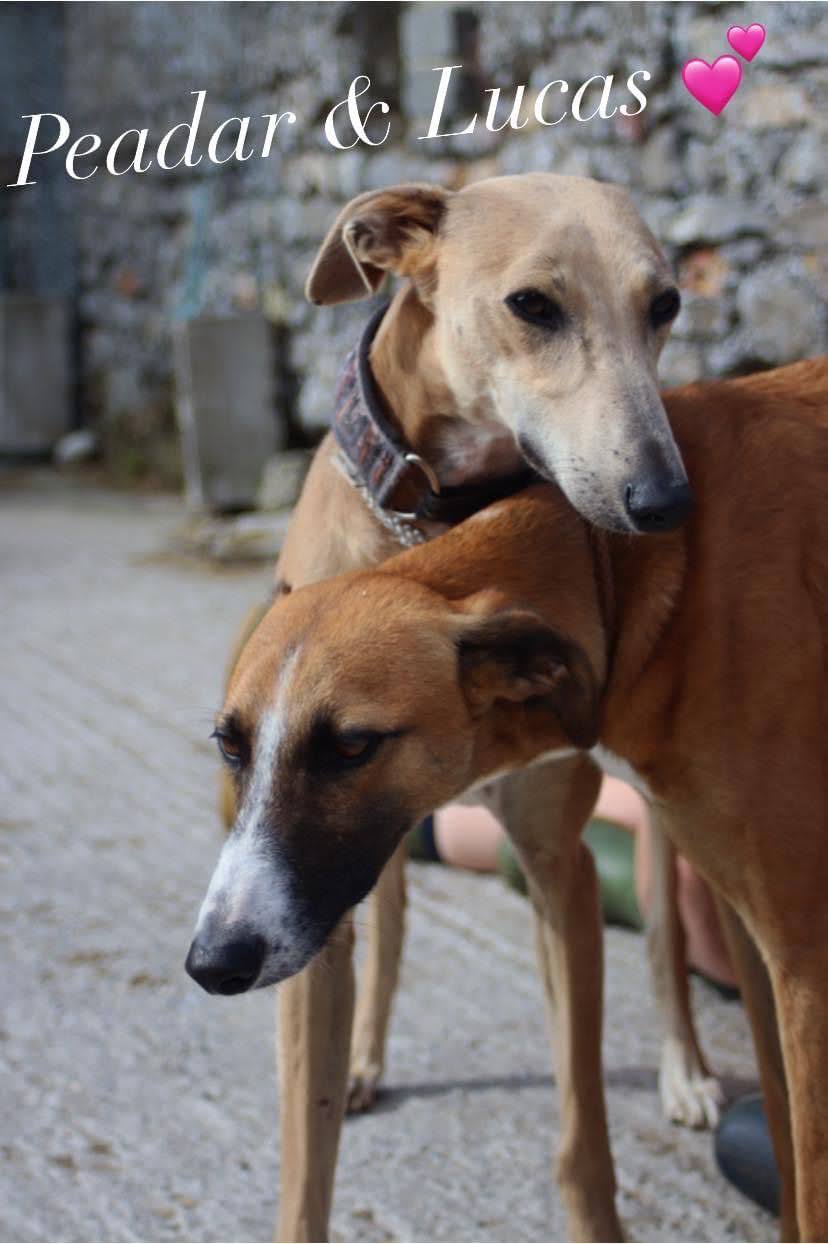
Someone is buying the thousands of dogs that are being bred in terrible conditions each year. Someone is buying the puppies from mothers who never get a break and who are treated as commodities and nothing else. Someone is buying from the large dog breeding establishments where breeding is on the scale of a conveyor belt system and care is minimal. Someone is buying from the backyard breeders who keep dogs in horrendous conditions, living in their own filth and trying to nurse their babies in unlivable situations from which they can never escape.
Just make sure that someone is not you or anyone you know.
And before you go and hand over hundreds if not thousands of euros for your ‘perfect’ dog, stop and think about all the dogs who will be put to sleep this year because no one wants them. Then think again and rescue a dog instead and hand over that same amount of money to people who are not in it for profit but who give every waking moment to trying to save lives.


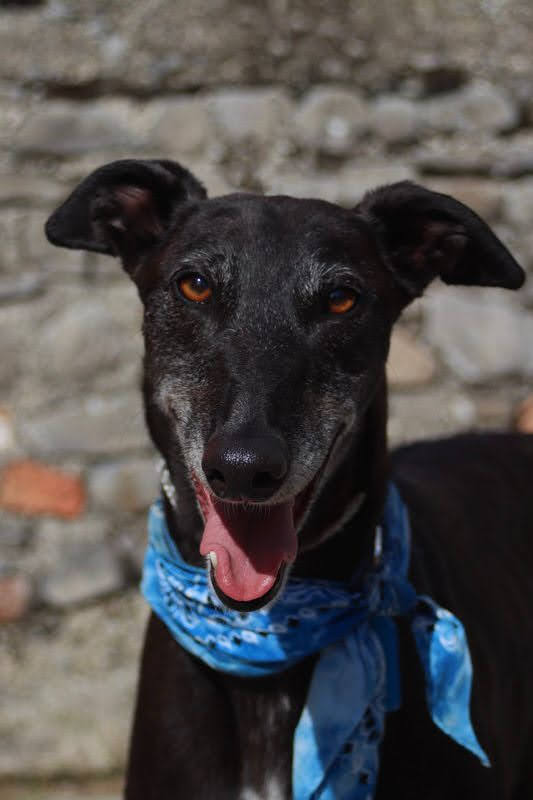
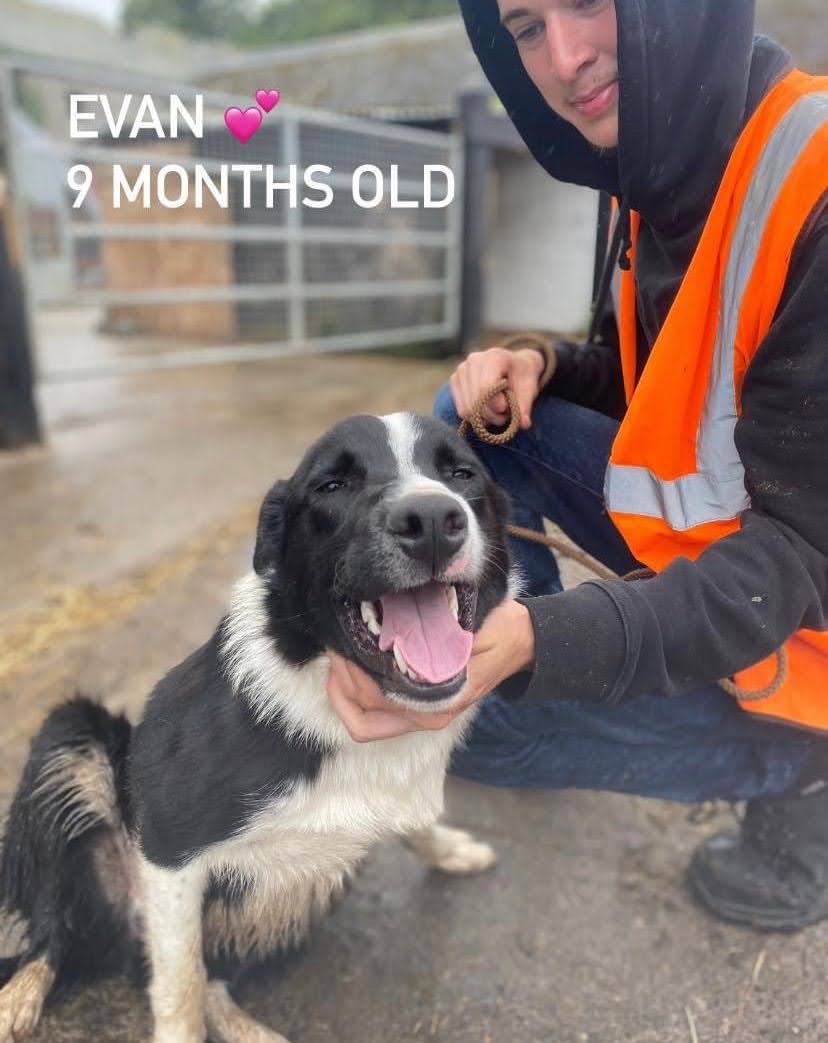
Departures – Gus – our lovely goat friend who has headed over the rainbow bridge
Gus was a real character and he is so missed on the farm since he passed recently.
He’d been surrendered to us with his friend Willy the year before from a lady who was very ill and needed help caring for them. They were both lovely goats but while Willy was quite content to head off and join our ever growing herd, Gus was more of a loner and content to spend his days exploring our farm…and the neighbour’s farms too when it took his fancy! He was very much his own little man, always wandering off in any direction that took his fancy, probably knowing full well that search parties would be out later trying to find him but completely unconcerned at the upheaval to routine farm life his disappearance would cause. Goats are usually only concerned with their own routines, not anybody else’s.


Gus really enjoyed hanging out with his two legged friends and when he wasn’t off alone on his wanderings he would be right under your feet on the yard following you around to see what you were getting upto – just in case it was something that he needed to be part of too. He loved his grub so hanging around the feed room was a favourite pastime and he never lost an opportunity to beg for extras of whatever was going.
Some days he would head off with our farm manager Fiona when she was heading out into the fields, literally following after just like any of our farm dogs would do. It was a lovely sight to see the two of them walking side by side as they headed out to check on all the horses and donkeys.
The weekend before Gus died he had gone missing. Nothing unusual to this so a couple of our farmies went off in search of him towards the end of the day. This time though something was wrong. When they saw him, he didn’t start trotting towards them or running off again. He was on the ground and he couldn’t get up. Once they got him to his feet though he seemed better and walked back home with them unaided. They kept an eye on him and he seemed fine but then a couple of days later it was obvious that something was off with him. He was standing around with his head down, not being his usual happy self at all and making no attempt to beg food or head off out into the fields. So we got our vet out to see him and it turned out after some investigation that he had some sort of bacteria which was not allowing him to absorb protein. This caused lots of complications and there was no real cure for it so in the end it was decided that rather than have him suffering, we would let him go. This was not an easy decision to make and it came as quite a shock to everyone too. Gus was not an old goat and everyone loved him so much and knew him quite well due to the fact that he hung around the yard so much with us all.

In the end though, letting him go was the right decision to make for Gus. Oh how we would love to still have to go searching for Gus late in the evening, even just one more time or to see his little trot as he followed Fiona out once more in the morning. We just hope that wherever he is, there is plenty of space to roam free and tasty bites on offer whenever he feels peckish and someone to walk with whenever he feels like a bit of company. Rest easy Gus, you are missed by all your friends and we will never forget you.
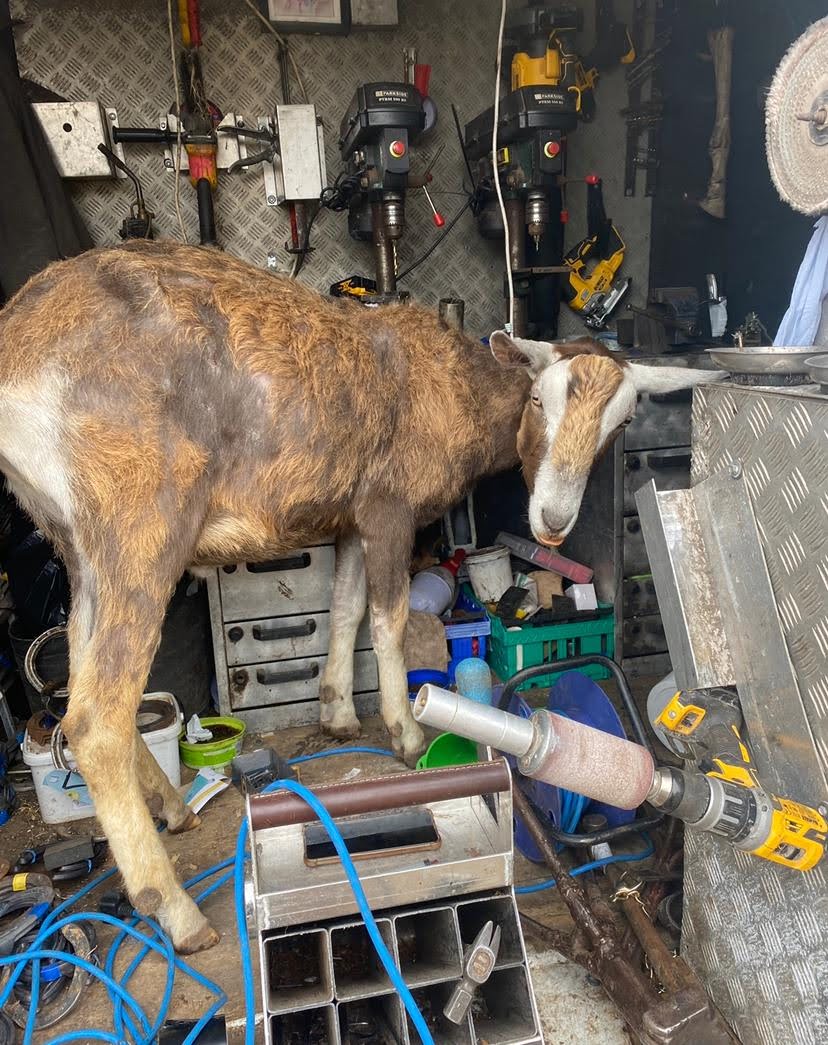



Did You Know? – Mad about Mules and hinnies
If “stubborn” is the first word that comes to mind when you think of mules and hinnies, then perhaps we can persuade you to change that perception. At the main MLHR farm we have the privilege of caring for Mules (our beautiful hinny Blake Lively was recently adopted). We are on a mission to dispel and debunk the old and often unkind myths about these amazing animals. We tend to say someone is stubborn when they refuse to do something we want them to do. But who among us has not dug their heels in when met with an unreasonable demand?
It’s unthinkable to us that mules’ lives are often considered to be “less valuable” than horses and donkeys, with no appreciation of the central role they have played in the development of civilisations for thousands of years. In fact, the mission of the American Mule Museum in California, USA, is to “tell the story of the contributions of the unsung hero, the mule, and the people who have worked with mules throughout history”.

Mules and hinnies like us, are sentient beings. They, like us, are independently-minded. If anything, they are to be commended for knowing and trusting their own minds. We may need reminding of that statement the next time a resident mule flat-out refuses to stand or co-operate for the farrier!
If a mule is the offspring of a male donkey and a female horse and a hinny is the offspring of a male horse and a female donkey, what are the offspring of mules and hinnies called? Did You Know that mules and hinnies are 99.9% sterile? Enter our old friend genetics …
Horses and donkeys belong to the same family and genus called Equidae. While they are different species, they are similar enough to be able to reproduce. Horses have 62 chromosomes and Donkeys have 64. A mule or hinny inherits half of their chromosomes from their horse parent (31 pairs) and half from their donkey parent (32 pairs), giving them 63 chromosomes. Having an extra chromosome doesn’t affect mitosis or cell division – where somatic cells (all cells except for sex cells) in our bodies divide and replicate constantly creating new cells for growth and the repair of cells which are worn or damaged.
Meiosis, however, is a type of ‘double cell division’ for reproduction that, in a complicated process, reduces the number of chromosomes in a cell by half and leads to the creation of gametes (sex cells). At the point of conception, parent 1’s gamete will fuse with parent 2’s gamete (each of which contains half of the full the number of chromosomes) and the complete number of chromosomes will be restored. For mules, since 63 chromosomes cannot be divided into equal pairs, the process of meiosis cannot be completed.
Physically, mules appear to have the body of a horse with the extremities of a donkey, whereas hinnies appear to have the body of a donkey and the extremities of a horse. Mules commonly have what is known as “hybrid vigour” (we call it their very own superpower). This was observed by naturalist Charles Darwin as far back as 1839, when he wrote “that mules should possess more reason, memory, obstinacy, social affection, powers of muscular endurance, and length of life, than either of its parents, seems to indicate that art has here outdone nature”.
Mules are amazing. They learn very quickly and have excellent memories – we also happen to think that they are born comedians! They need mental stimulation and companionship and the mules in our care live happily with other mules, donkeys, horses and goats. We can certainly attest to their incredible intelligence, their curiosity and their sensitivity. It cannot be overstated that they have the most glorious and soulful eyes and that spending time staring lovingly into them is time very well spent indeed.

We care for animals at all stages of their lives and love helping them celebrate each of their milestones! Here are some of the animals in our care who are celebrating their special day in September.







In August we welcomed Volunteer Ireland to the main MLHR farm to help spread the word that the 2022 Volunteer Ireland Awards are now open for nominations. This got us thinking about our incredible team of volunteers who generously give their time, unique skills and talents to support MLHR’s work. They come from all walks of life and have all manner of day jobs, so what unites us? We asked our Volunteers to sum up what volunteering with MLHR means to them, here’s what they had to say!
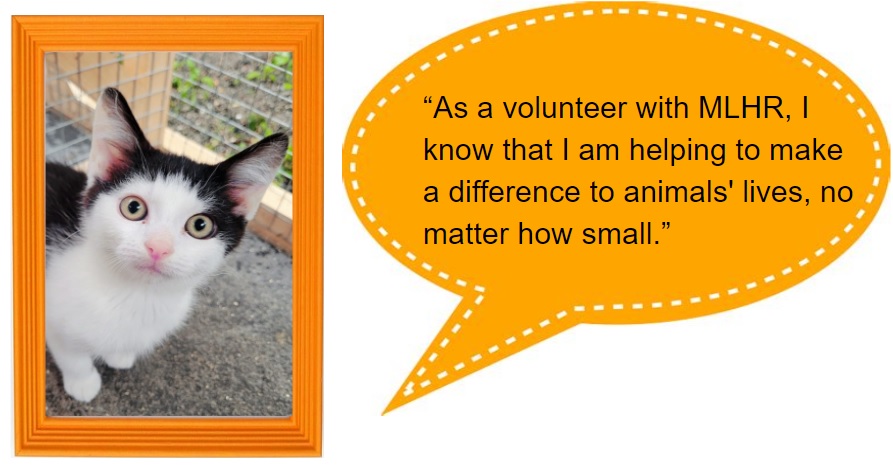


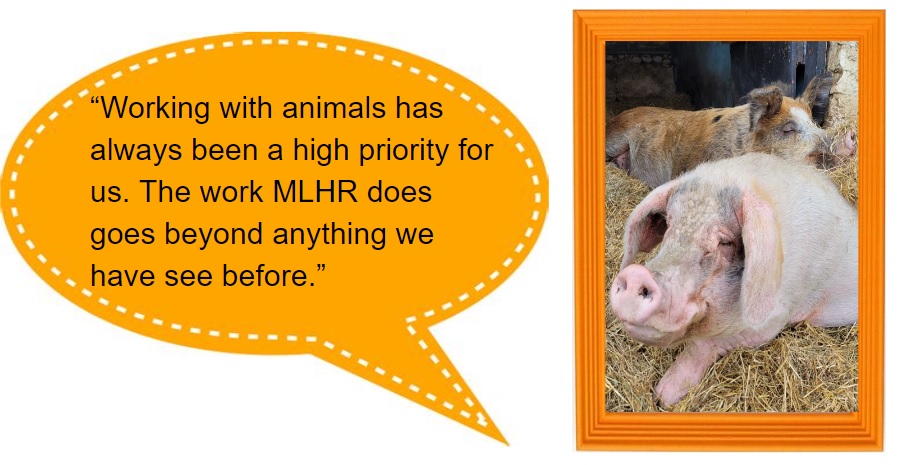
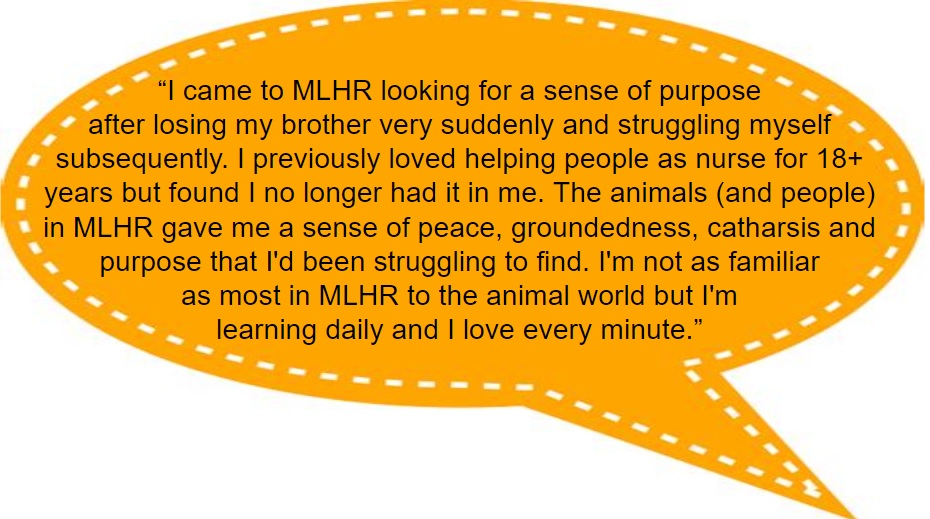


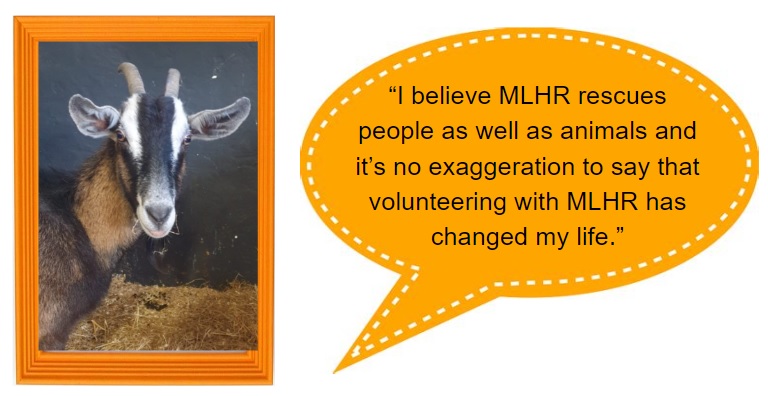
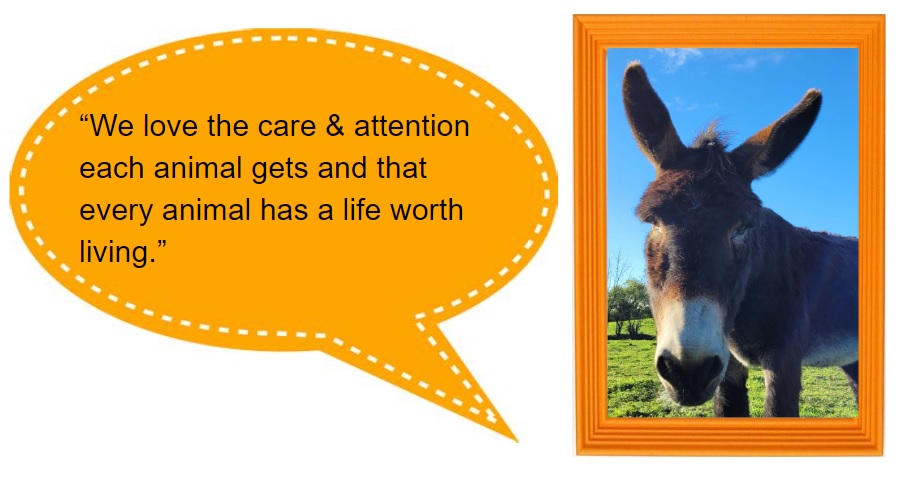
If you are interested in volunteering with My Lovely Horse Rescue please email [email protected] If you are in the Cork area, My Lovely Horse Rescue Cork is seeking volunteers who are over the age of 18 and have equine knowledge who can assist with handling youngsters, transporting, assisting with vet and farrier work. You can get in touch via the Facebook page.
If you’re not quite sure what you’d like to do or how to get started, you can visit the National Volunteering Database for details of more than 1,800 volunteering roles. Kofi Annan, former secretary-general of the United Nations said “if our hopes of building a better and safer world are to become more than wishful thinking, we will need the engagement of volunteers more than ever.” We need more kindess and compassion in the world. What better place to sow those seeds than in our own communities?

We were delighted to welcome so many of our supporters to the grand reopening of our vintage Charity Shop and Tack Shack on Saturday 6 August. MLHR co-founders Deborah and Martina Kenny marked the occasion with a ribbon-cutting ceremony and some tast treats … what’s a celebration without cake!?
Our wonderful volunteers Dorothy, Edel, Ruby, Georgia and Alex put their hearts and souls into redesigning the shop and creating a space that is warm and welcoming, colourful and chic. Treat yourself to a leisurely browse, take some time out in our gorgeous book nook. We have fashion to suit everyone (horses included), beautiful collections of jewellery and homewares and so much more!


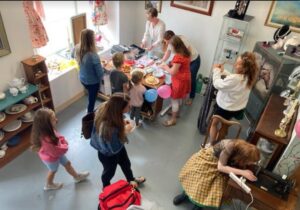
We are seeking Volunteers for our shop. Duties include sorting donations received, preparing stock for display, replenishing shelves and rails and assisting customers. If you can spare one day or one half-day a week please email [email protected] – we would love to hear from you. Find us from Tuesday to Saturday 10 a.m. to 5:30 p.m. at 81 JKL Street, Edenderry, Co. Offaly.


Our farmies work from morning until night to keep the farms running and all the animals cared for. Between cleaning, feeding preparation, medical treatments and call outs, they capture so many moments on camera, from the interesting, to the funny and tender. Here are some ‘behind the scenes’ videos and photos from the farms this month.




CBD Science Ltd. has been incredibly generous in gifting products to the MLHR residents and in sponsorsing our newsletter. Their lavendar and eucalyptus healing salve is a particular favourite with the animals in our care. Not only does it smell amazing but it is made from natural and organic products, oils, and beeswax and is infused with 10% broad spectrum CBD – perfect for soothing irritated skin and scars.
Our donkey friend Gramps is prone to dry and lumpy skin on his nose and ears which can become cracked and sore. Since using this product we have seen huge improvements in Gramps’ skin and the lavendar and eucalyptus healing salve is now a part of his daily skin-care regime. It’s amazing on human skin too so please do check it out!
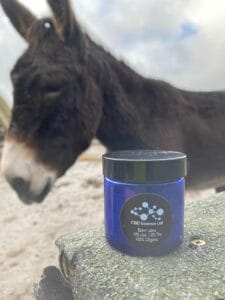

Under the Animal Health and Welfare Act 2013, only Authorised Officers (An Garda Síochána; Department of Agriculture, Food and the Marine Inspectors; and County Councils/Local Authority Inspectors) are permitted to seize animals, to enter private property, to carry out investigations or to bring prosecutions. MLHR assists Authorised Officers with their work and for this reason, it is vital that members of the public reporting incidents to MLHR also report to the relevant Authorised Officers so that we can liaise with and help them move animals out of harm’s way and into safety.
What you can do
1. Provide us with a description of the animal(s) at risk and the nature of the incident.
2. Send us a pin drop or accurate description of the location.
3. Take Photographs/Video footage but only if it is safe to do so.
4. Tell us which Authorised Officer or Garda station you have contacted.

How to make contact with Authorised Officers
• An Garda Síochána – A list of Garda stations is available online at https://www.garda.ie/en/contact-us/station-directory/
• Local Authorities (for incidents on Public land) https://www.gov.ie/en/help/departments/#local-authorities
• ISPCA for emergencies call 1890 515515 (Monday to Friday 9 a.m. – 5 p.m.). Welfare concerns can http://www.ispca.ie/cruelty_complaint
• Department of Agriculture, Food and the Marine – for incidents on private land phone 01 607 2379 or 0761 064 408 or email [email protected]



0 Comments